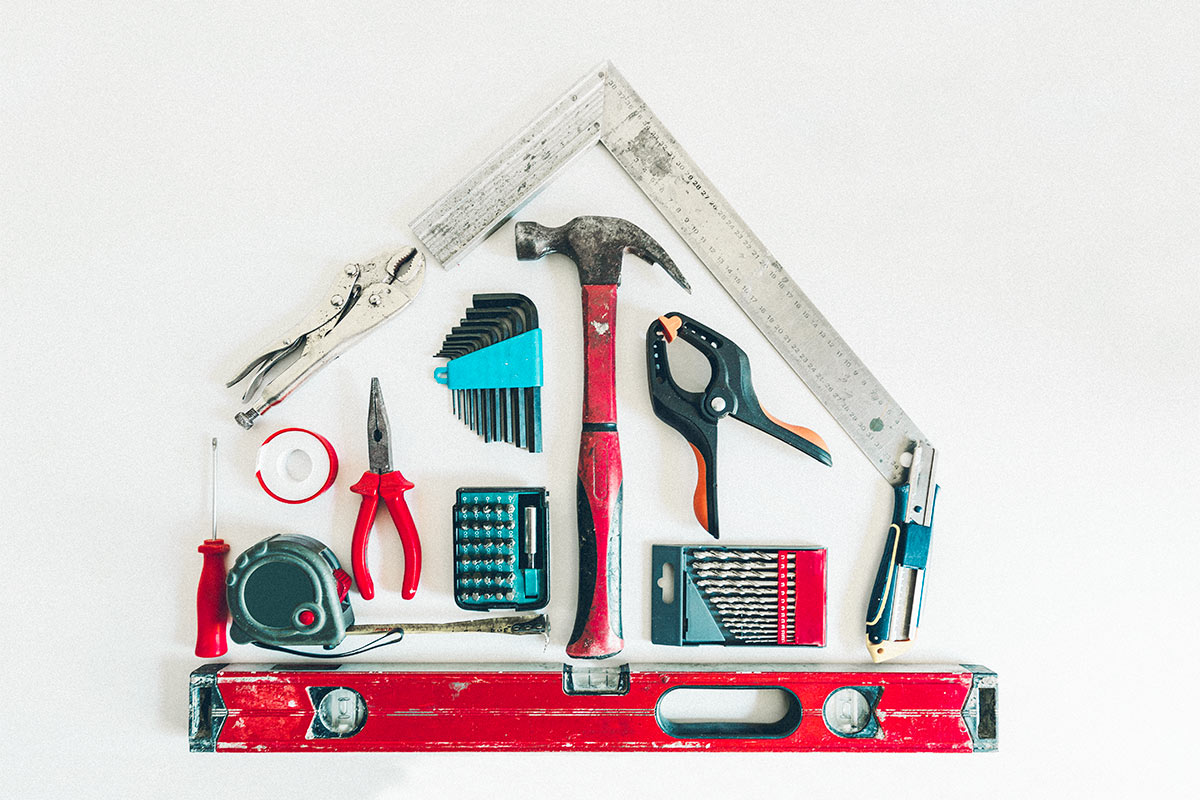
Answer These 4 Math Questions Before You Apply for a HELOC
Dreaming of a master bedroom that feels like a spa retreat? How about a backyard update for all those family get-togethers? Or maybe you’re wanting to turn your shed into something new and fresh?
If you’re wondering how you’re going to transform your home improvement dreams into reality, wonder no more! This is the perfect time to consider a home equity line of credit (HELOC). Of course, upgrading your home isn’t the only thing you can do with a HELOC. It’s also a good option for taking care of education costs, medical bills, and other debt. It’s also a good option for taking care of high-interest rate debts, such as credit cards.
Mountain America advises to use a HELOC wisely. "A HELOC can be a valuable resource for homeowners to fund improvements that will increase the value of their home or provide relief from true financial emergencies. While HELOCS can be a source of lower interest cash compared to other resources, such as credit cards, they should not be your go-to to fund all expenses. It is not a good idea to apply for a HELOC to fund your next car or family vacation. With a HELOC, your house is at risk. Be aware, if you fail to make your payments, you could lose your home."
Before you apply for a HELOC, it’s a good idea to run some numbers to better understand what’s required to get approved and to see if there’s anything that you can do to up your chances of being approved.
Requirements to qualify for a HELOC vary by lender, but the following are a few common factors that you’ll want to consider before making a decision.
-
How much equity do I have?
When it comes to home equity, it can be defined as how much market value your home has. A HELOC can provide a certain level of flexibility that isn’t an option in a traditional mortgage. This is one of the first HELOC requirements you should address when making this consideration. You can figure out how much equity you have in your home by subtracting the amount you owe on all loans secured by your house from its appraised value. If you owe $200,000 on your home and its appraised value is $350,000, your home equity is $150,000. Understanding how much equity you have in your home is the first step to determining your process for obtaining a HELOC.
-
What is my combined loan-to-value ratio?
If you want to tap into your home’s equity with a HELOC, another important calculation is your combined loan-to-value ratio (CLTV). This assesses your home’s value against the total of all loans secured by it, including the amount of the HELOC. If you want to apply for a $65,000 HELOC with a $200,000 mortgage loan balance, you would calculate your CLTV like this:
(Total loan balances secured by your home + HELOC amount) ÷ current appraised home value.
In this scenario, if we assume that the mortgage is the only loan secured by the property and the appraised amount of the property is $350,000, this is how it would shake out:
($200,000 + $65,000) ÷ $350,000 = .757 or 75.7%
Though the number may vary, most lenders will require a CLTV that is below 85% to qualify for a HELOC. It’s also important to remember that your home’s value can fluctuate over time. If the value drops, you may not be eligible for a HELOC, or you may end up owing more than your home is worth. Take all of this into consideration as you incorporate the HELOC calculator into your planning and preparation to help determine your CLTV.
-
Do I have a low debt-to-income ratio?
Your debt-to-income ratio (DTI) is the percentage of your monthly income that goes toward paying your debt. While the percentage requirement can vary by lender, you can safely expect to need a DTI ratio of less than 47% to be approved for a HELOC. Lenders want to make sure you can afford to borrow more money while keeping up with your current obligations, so the lower the DTI, the better the chances are that you’ll be approved for a HELOC.
To figure out your DTI, you’ll start by adding up all your monthly payments. Take some time and sit down to get all of your expenses and monthly payments recorded in one place for easy access. This includes things like your mortgage principal and interest, taxes, homeowners insurance, car loan, any child support expenses you have, and any other debt you’re legally responsible to pay. Divide this total by your monthly gross income, as follows:
Total monthly recurring debt ÷ monthly gross income = DTI.
Let’s say your household pays $1,900 in monthly recurring debt payments and has a monthly gross income of $5,000. That would make the equation as follows:
$1,900 ÷ $5,000 = 38%
-
Do I have a good or excellent credit score?
There’s no math necessary for this one—but it’s still all about the numbers! While qualifying for a HELOC depends more on your home equity than your credit score, good or excellent credit can simplify the process and make it a lot easier to qualify for a HELOC. A good average to shoot for is 645 or higher. Plus, the better your credit score, the better your interest rate. You can usually get all the details on your credit score from your bank or credit union, or look into a service like Credit Karma or Experian to find out what your score is and what is affecting it.
So whatever way you’re looking for to best update your backyard or to make some renovations for your home, consider looking into how to get a HELOC to help make your dreams a reality. Check out the requirements and get in touch with a representative today to get the process started!
Related Articles

3 Burning Questions: HELOCs

3 Things to Know Before Your HELOC Matures
